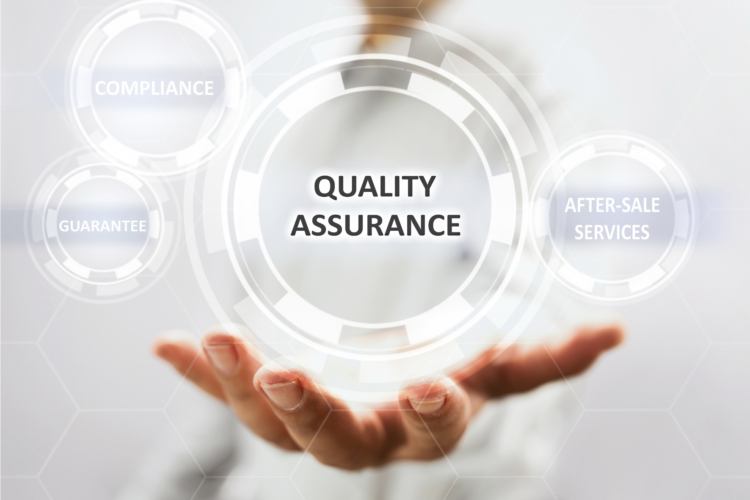Companies often struggle to find the perfect talent for crucial IT projects. This is where IT staff augmentation becomes a game-changer. But what do we mean by this term?
IT staff augmentation is a strategic approach to fill skill gaps in-house by hiring external professionals on a temporary basis. It offers flexibility, access to specialized skills, and a cost-effective solution to staffing needs.
However, evaluating IT staff augmentation proposals can be daunting. Common challenges include understanding the vendor’s capabilities, ensuring cultural fit, and navigating budget constraints. This guide aims to simplify the evaluation process by providing clear criteria and actionable steps.
In this blog post, we explore everything you need to know about how to evaluate IT staff augmentation proposals.
Understanding Your Business Needs

Before diving into IT staff augmentation proposals, it’s crucial to clearly grasp the requirements and objectives of each project. Let’s break down how to understand your needs to ensure you choose the best option for your company.
Ready to get started? Let’s go!
- Clarify project requirements and objectives: Start by outlining the scope and goals of your project, especially if it’s related to software development services. What specific outcomes are you aiming for? Having this clarity will help you identify the type and level of expertise needed.
- Identify technical skills and expertise required: Determine the technical skills and certifications required for the project. Are you looking for software developers, network engineers, or data scientists? Specify the technologies and tools in which the candidates should be proficient, including big data analytics and blockchain development services.
- Determine budget and timeline constraints: Establish your budget and timeline constraints early on. Knowing your financial limits and project deadlines will help you filter out proposals that don’t align with your capabilities.
Vital Checks for Proposal Review
It’s crucial to set clear criteria to make a smart decision. These guidelines will help you assess IT staff augmentation proposals and determine whether they fit with your business goals and corporate culture. Here are some key parameters to consider when evaluating your options.
1. Vendor experience
When evaluating IT staff augmentation proposals, vendor experience is a critical factor. This experience not only reflects the vendor’s capability but also their reliability and consistency in delivering quality services. Here are two primary aspects to consider.
First, consider vendors who have significant experience in the field of IT staff augmentation. Vendors with a long track record are often more reliable, as their continued operation suggests they have successfully met client needs over time.
For instance, a vendor specializing in AI software development services for over a decade likely has deep expertise and a proven track record in this niche. This longevity can be a reassuring indicator of their reliability and proficiency.
Examining past projects and case studies that are relevant to your specific requirements is essential. Look for vendors who have completed similar projects, especially in AI software development services.
For example, if a vendor has successfully delivered an AI-driven customer service chatbot for a retail company or developed a predictive analytics tool for a healthcare provider, these examples demonstrate their capability to handle complex AI projects.
Such case studies show that the vendor can meet specific technical challenges and deliver solutions tailored to unique business needs.
2. Technical Competence
Technical competence is a crucial factor when evaluating IT staff augmentation proposals. This ensures the vendor’s team has the necessary skills and expertise to meet your project’s technical demands. There are two aspects to consider.
Verify the candidate’s qualifications, certifications, and expertise. Ensure the proposed candidates have all that you need. For example, if you are seeking mobile app development services, check if the candidates have certifications in relevant technologies like iOS (Swift) or Android (Kotlin).
Similarly, for web development services, look for qualifications in frameworks such as React, Angular, or Laravel. A candidate with a certification in Google’s Associate Android Developer or Microsoft Certified: Azure Developer can be a valuable asset, demonstrating their proficiency in essential development tools and environments.
Assess the vendor’s agility in adopting new technologies and methodologies. This is particularly important in fields like mobile app and web development, where technology evolves rapidly.
For instance, a vendor offering mobile app development services should demonstrate familiarity with the latest advancements, such as integrating AI for personalized user experiences or utilizing cross-platform development tools like Flutter.
Similarly, for web development services, the vendor should show competency in adopting recent trends such as progressive web apps (PWAs), serverless architectures, or headless CMS platforms. This adaptability ensures that the vendor can leverage the latest technologies to enhance your project outcomes.
3. Cultural Fit
Cultural fit is an often overlooked but crucial aspect when evaluating IT staff augmentation proposals. Ensuring that the vendor’s work culture aligns with your organization’s values and practices can significantly impact the success of the collaboration.
Assess the alignment of work culture between your vendor and your company. To achieve a seamless integration, it’s important to evaluate how well the vendor’s work culture aligns with your business’ values and practices. This alignment can facilitate better communication, collaboration, and overall project success.
If your company prioritizes innovation and continuous learning, you should look for an IT staff augmentation services vendor that fosters a similar environment. Check whether the vendor encourages its team members to stay updated with the latest technologies through regular training sessions, workshops, and certifications.
Additionally, consider the vendor’s approach to teamwork and communication. If your company values open and frequent communication, ensure the vendor maintains transparency and regular updates throughout the project cycle.
For instance, a vendor who uses agile methodologies and holds daily stand-ups or weekly sprint reviews can indicate a good cultural fit, as these practices emphasize iterative progress and constant communication.
Another aspect to consider is the work-life balance and flexibility offered by the vendor. If your company supports flexible working hours or remote work options, partnering with a vendor that has similar policies will ensure smoother collaboration.
4. Scalability and Flexibility
Scalability and flexibility are critical when selecting an IT staff augmentation vendor. These attributes ensure that the vendor can adjust the resource levels according to your project’s evolving needs, providing you with the agility required for effective project management.
One of the key advantages of IT staff augmentation is the ability to scale resources up or down based on project demands. Here’s how you can evaluate this capability in a potential vendor.
Assess the vendor’s resource pool
Check if the vendor has a substantial pool of qualified professionals. A large and diverse resource pool means the vendor can quickly provide additional talent when your project requirements increase. For example, if your project transitions from a development phase to an intensive testing phase, the vendor should be able to supply experienced QA testers without delay.
Flexible contract terms
Review the vendor’s contract terms to ensure they offer flexibility in scaling resources. Contracts that allow for easy addition or reduction of team members based on project stages or unforeseen changes can save you time and costs. For example, a vendor offering month-to-month contracts might be more adaptable compared to one requiring long-term commitments.
Cross-functional capabilities
Consider vendors that can provide cross-functional teams able to tackle different aspects of the project. This versatility means that even as your focus shifts from development to integration to support, the same vendor can continue to meet your needs without requiring new contracts or extensive onboarding processes.
Technology and infrastructure support
Ensure the vendor has the necessary technological infrastructure to support scalability. This includes access to remote working tools, cloud-based collaboration platforms, and robust communication systems. A vendor equipped with such resources can scale operations smoothly, regardless of where their team members are located.
5. Security and Compliance
Data security and regulatory compliance are paramount when selecting an IT staff augmentation vendor. Ensuring that your chosen vendor adheres to stringent security measures and complies with relevant regulations protects both your data and your company’s reputation.
Here’s how you can review data security policies and adherence to regulatory requirements.
- Data Security Policies: Examine the vendor’s data security policies to ensure they have robust measures in place. This includes encryption protocols, secure data storage practices, and access controls. A vendor with comprehensive security policies minimizes the risk of data breaches and unauthorized access.
- Regulatory Compliance: Verify that the vendor complies with relevant industry regulations and standards such as GDPR, HIPAA, or ISO/IEC 27001. Compliance with these standards indicates that the vendor follows best practices in data protection and operational security.
- Regular Audits and Assessments: Check if the vendor conducts regular security audits and assessments. Continuous monitoring and periodic evaluations help identify and mitigate potential security vulnerabilities.
- Incident Response Plan: Ensure the vendor has a well-defined incident response plan for addressing data breaches and security incidents promptly. Quick response capabilities are vital for minimizing damage and restoring security.
By reviewing data security policies and adhering to regulatory requirements, you can confidently select a vendor that prioritizes protecting your sensitive information and meets all necessary compliance standards.
6. Cost Analysis
Conducting a thorough cost analysis is essential when evaluating IT staff augmentation proposals. This involves examining the pricing models and assessing the overall value for money to ensure you make an informed decision.
This is how you can compare pricing models and estimate costs:
- Pricing Models: Review the different pricing models offered by each vendor, such as hourly rates, fixed-price contracts, or retainer agreements. Understanding these models helps you gauge which one aligns best with your budget and project needs.
- Hidden Costs: Look out for any hidden costs or additional fees that might not be immediately apparent. These could include setup fees, overtime charges, or costs for extra services.
- Value Beyond Price: Assess the overall value of each proposal by considering factors such as the quality of talent provided, the vendor’s experience, and their ability to deliver within deadlines. A slightly higher upfront cost may be justified by superior service and better outcomes.
- Cost-Benefit Analysis: Perform a cost-benefit analysis to weigh the benefits received against the costs incurred. This can help you determine whether the investment in a particular vendor will yield a satisfactory return.
By comparing pricing models and evaluating the overall value for money, you can make a well-rounded decision that balances cost with quality and reliability.
Key Criteria for Succesful Vendor Evaluation

A structured evaluation process is vital for selecting the right IT staff augmentation vendor. Start by assembling an evaluation team comprising stakeholders from relevant departments.
This multi-disciplinary approach ensures that all aspects of the project are considered, from technical requirements to financial implications and cultural fit. Having diverse perspectives can provide a more comprehensive assessment of each vendor’s suitability.
Next, develop a scoring system based on your predefined criteria. This system should include various metrics such as:
- Technical expertise
- Experience
- Scalability
- Cost
- Security measures
- Cultural alignment
By assigning weights to each criterion, you can objectively evaluate and compare each proposal. A well-designed scoring system helps in minimizing biases and ensures a fair assessment of all vendors.
Once you have shortlisted potential vendors based on their initial proposals and scores, conduct interviews with them to gain deeper insights into their capabilities and approaches.
These interviews offer an opportunity to ask detailed questions, clarify any ambiguities, and assess the vendors’ communication skills and responsiveness. Engaging in direct dialogue with the vendors can reveal their problem-solving abilities, flexibility, and how well they might integrate with your existing team.
Making the Final Decision
When it’s time to make the final decision on selecting an IT staff augmentation vendor, a thorough and comparative evaluation of the shortlisted proposals is essential. Start by comparing these proposals side-by-side, carefully weighing the pros and cons of each.
Next, ask for input from the evaluation team. The team’s diverse perspectives are invaluable for making a well-rounded decision. Gather feedback on their impressions, concerns, and recommendations regarding each vendor. This collaborative approach ensures that all relevant viewpoints are considered, leading to a more informed and balanced choice.
Before finalizing the agreement, confirm the references provided by the vendors. Contacting these references allows you to verify the vendors’ claims about their performance, reliability, and quality of service.
It also gives you a chance to ask about any potential issues and how they were resolved. This step is crucial for mitigating risks and ensuring that the vendor you choose has a proven track record of success.
Takeaway
Evaluating IT staff augmentation proposals requires a thoughtful approach to ensure you choose the best vendor for your needs. Start by diving into your business requirements and project goals.
Establish clear criteria that cover vendor experience, technical skills, cultural alignment, scalability, flexibility, security, and costs. Bring together a diverse team for evaluation, create a structured scoring system, and conduct in-depth vendor interviews to get a better sense of who they are.
Compare proposals, gather your team’s input, and check vendor references to make an informed decision.
Contact us to confidently navigate the complexities of IT staff augmentation and find the right talent to propel your projects to success. You can also follow us on LinkedIn to learn more about current tech trends.
FAQ
What differentiates IT staff augmentation from outsourcing?
IT staff augmentation involves hiring external professionals to work alongside your in-house team on specific projects, while outsourcing typically involves delegating entire projects to an external company.
How long does it take to evaluate IT staff augmentation proposals?
The evaluation process can vary but generally takes a few weeks, depending on the complexity of the project and the number of proposals received.
What is the standard cost structure for IT staff augmentation?
Cost structures can vary, but they typically include hourly rates for the resources provided or a fixed fee depending on the project scope.
How can I assess the cultural fit of an IT staff augmentation vendor?
Assessing cultural fit involves understanding the vendor’s work environment, values, and communication style through interviews and reference checks.
What level of security should I expect from an IT staff augmentation vendor?
Expect robust data security measures, including compliance with relevant regulations, secure data handling practices, and regular security audits.
How do I ensure my data remains secure with an external vendor?
Ensure the vendor follows strict data protection protocols, including encryption, access controls, and regular security assessments.
How can I negotiate better terms in IT staff augmentation contracts?
Negotiating better terms involves clearly defining project requirements, understanding market rates, and being open to compromise on non-essential elements.
By following this guide, you can navigate the complexities of evaluating IT staff augmentation proposals with confidence and make informed decisions that best suit your organization’s needs.










